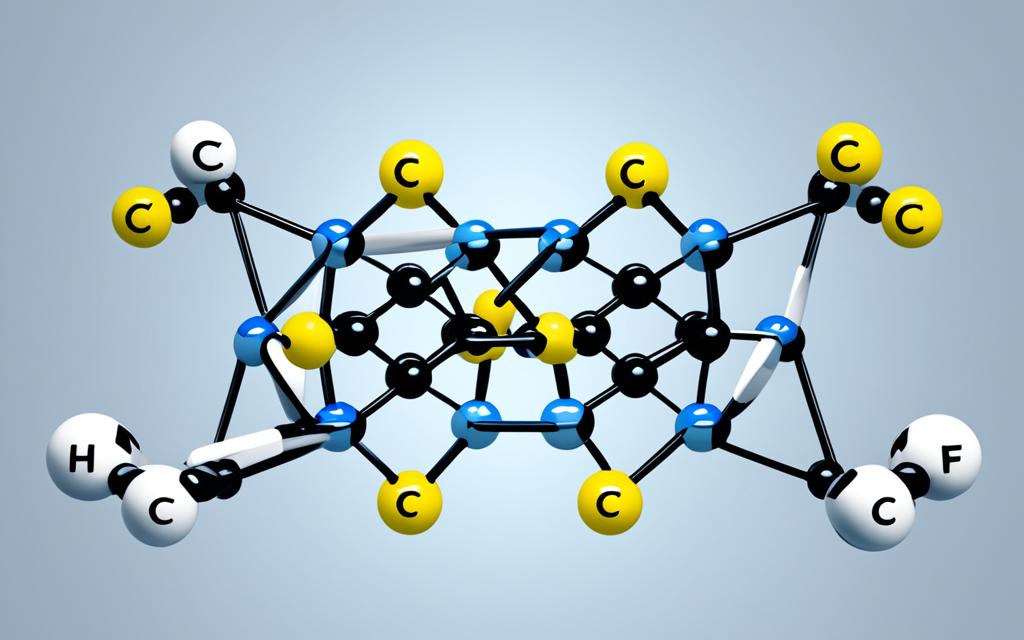Unlock the secrets of the CS2 Lewis structure and dive into the captivating world of carbon disulfide bonding. In this comprehensive guide, we’ll explore the molecular geometry, bond angles, and real-world applications of this versatile compound. By understanding the fundamental concepts of bonding and hybridization, you’ll gain a deeper appreciation for the unique properties that make CS2 an essential player in various industries.
Prepare to embark on a journey of chemical exploration as we unravel the intricacies of the carbon disulfide molecule. From drawing the Lewis structure of CS2 to analyzing its bond angles and molecular geometry, this article will equip you with the knowledge to comprehend the significance of CS2 in the world of chemistry.
Whether you’re a chemistry enthusiast, a materials scientist, or simply someone curious about the world around you, this guide will provide you with a comprehensive understanding of the CS2 Lewis structure and its far-reaching properties and applications. Join us as we delve into the fascinating realm of hybridization in CS2 and uncover the secrets behind the bond lengths that make this compound so unique.
Lastly, we’ll explore the crucial safety precautions for handling CS2, ensuring you’re equipped with the knowledge to work with this remarkable substance responsibly. Prepare to be enlightened and empowered as we navigate the captivating world of carbon disulfide bonding.
Introduction to CS2 Molecule
Carbon disulfide (CS2) is a colorless, flammable, and highly volatile liquid compound composed of one carbon atom and two sulfur atoms. It is a versatile chemical with a wide range of applications, from industrial processes to organic synthesis. Understanding the Lewis structure and bonding in CS2 is crucial for predicting its behavior and understanding its properties and uses.
The CS2 molecule is an important compound in various industries due to its unique chemical and physical characteristics. Its properties and applications make it a valuable resource in fields such as rubber production, organic synthesis, and as a precursor for other important chemicals.
By exploring the fundamental aspects of the CS2 molecule, including its Lewis structure, bond angles, and hybridization, you can gain a deeper understanding of this versatile compound and its role in chemistry and industry.
Drawing the CS2 Lewis Structure
To start drawing the Lewis structure of carbon disulfide (CS2), you’ll first need to identify the central atom. In this case, the central atom is carbon (C). Next, you’ll need to count the total number of valence electrons available, which is determined by the number of electrons in the outer shell of each atom. For the CS2 molecule, the carbon atom has 4 valence electrons, and each sulfur (S) atom has 6 valence electrons, resulting in a total of 16 valence electrons.
With the central atom and valence electrons identified, you can then begin arranging the atoms and bonds to create the most stable Lewis structure for the CS2 molecule. This involves considering the octet rule, which states that atoms tend to form bonds to achieve a stable configuration of 8 valence electrons. Additionally, you’ll need to check the formal charge of each atom to ensure the overall structure is the most stable and balanced.
By following these steps, you can confidently draw the Lewis structure of the carbon disulfide molecule, which will provide a visual representation of the bonding and electron distribution within the compound. This understanding of the CS2 Lewis structure is essential for predicting the molecule’s properties, reactivity, and potential applications.
Bond Angles and Molecular Geometry
The Lewis structure of CS2 provides insights into the molecule’s bond angles and overall molecular geometry. Using the VSEPR (Valence Shell Electron Pair Repulsion) theory, we can predict the shape of the CS2 molecule and explain the observed bond angles. This understanding of the molecular geometry is essential for predicting the physical and chemical properties of carbon disulfide.
The CS2 molecule, with its central carbon atom and two sulfur atoms, exhibits a linear molecular geometry. This is because the carbon atom has two bonding pairs of electrons and no lone pairs, resulting in a 180-degree bond angle between the sulfur atoms. The linear arrangement of the atoms in CS2 is the most stable configuration, minimizing the repulsion between the bonding electron pairs.
Understanding the bond angles in CS2 is crucial for predicting the physical and chemical properties of the molecule. The linear geometry and 180-degree bond angle contribute to the overall stability of the CS2 molecule, which is further enhanced by the sp hybridization of the carbon atom. This knowledge helps chemists and material scientists anticipate the behavior and reactivity of carbon disulfide in various applications.
| Molecular Geometry | Bond Angle | Hybridization |
|---|---|---|
| Linear | 180 degrees | sp |
The molecular geometry and bond angles of CS2 are determined by the VSEPR theory, which takes into account the number of bonding pairs and lone pairs around the central carbon atom. By understanding these fundamental principles, you can predict the shape and properties of the carbon disulfide molecule, enabling you to leverage its unique characteristics in various applications and research contexts.
Properties and Applications of CS2
Carbon disulfide (CS2) is a remarkable compound with a unique set of physical and chemical properties that make it invaluable in various industries. From its high volatility and flammability to its impressive reactivity and solvency, CS2 has found widespread applications in fields such as organic synthesis, rubber production, and as a precursor for other essential chemicals.
The physical properties of CS2 include its low boiling point, high vapor pressure, and low viscosity, which contribute to its versatility as a solvent. Chemically, CS2 is highly reactive, making it a valuable reagent in various organic transformations. Its solvency properties allow it to dissolve a wide range of organic compounds, including rubber, making it a crucial component in the production of various rubber-based products.
In the industrial applications of CS2, it is extensively used as a precursor for the production of important chemicals, such as carbon disulfide, xanthates, and carbon tetrachloride. Additionally, CS2 finds use in the vulcanization of rubber, a process that enhances the material’s durability and resilience. The commercial applications of CS2 span industries like agriculture, textiles, and pharmaceuticals, where it serves as a solvent, fumigant, and intermediate in the synthesis of various compounds.
Recognizing the properties and applications of CS2 provides a deeper understanding of the significance of this remarkable compound in the chemical and industrial landscape. Its versatility and importance in diverse fields underscores the need for careful handling and safety considerations, which will be explored in a later section.
Hybridization in CS2
The bonding in the carbon disulfide (CS2) molecule is characterized by sp hybridization of the carbon atom. This hybridization allows the carbon to form two equal-length, strong carbon-sulfur sigma bonds, with the remaining two sulfur atoms forming pi bonds. Examining the distribution of lone pairs and bonding pairs provides further insights into the stability and reactivity of the CS2 molecule.
In the CS2 molecule, the central carbon atom undergoes sp hybridization, which means that one 2s orbital and two 2p orbitals of the carbon atom combine to form three equivalent sp hybrid orbitals. These sp hybrid orbitals then participate in the formation of the two strong carbon-sulfur sigma bonds, each with a bond length of approximately 1.56 Å.
The remaining two 2p orbitals of the carbon atom form two pi bonds with the sulfur atoms, contributing to the overall stability and sp hybridization in CS2. The sulfur atoms, on the other hand, maintain their tetrahedral geometry with two bonding pairs and two lone pairs of electrons.
| Characteristic | Description |
|---|---|
| Hybridization of Carbon | sp |
| Bonding Pairs | 2 (C-S sigma bonds) |
| Lone Pairs | 2 (on each sulfur atom) |
| Bond Angle | 180° (linear) |
The distribution of lone pairs and bonding pairs in the CS2 molecule is crucial in understanding its stability and reactivity. The two lone pairs on each sulfur atom contribute to the overall electron density around the molecule, affecting its polarity and intermolecular interactions. This understanding of the sp hybridization in CS2 provides valuable insights into the chemical and physical properties of this important compound.
CS2 Lewis Structure and Bond Lengths
When examining the CS2 lewis structure, you’ll also find interesting insights into the bond lengths within the carbon disulfide molecule. The bond lengths in CS2 are influenced by various factors, including electronegativity differences, bond order, and the presence of lone pairs on the sulfur atoms.
The carbon-sulfur bond lengths in CS2 are typically around 1.56 angstroms (Å). This bond length is shorter than the sum of the covalent radii of carbon (0.77 Å) and sulfur (1.05 Å), which would suggest a single bond. However, the presence of double bonds between the carbon and sulfur atoms contributes to the shorter bond length.
The factors affecting bond length in CS2 include the following:
- Electronegativity Difference: The higher electronegativity of sulfur compared to carbon creates a slight polarity in the C-S bonds, which can influence the bond lengths.
- Bond Order: The carbon-sulfur bonds in CS2 have a bond order of 2, as they are double bonds. This increased bond order leads to a shorter bond length compared to a single bond.
- Lone Pairs: The presence of lone pairs on the sulfur atoms can also contribute to the bond length, as the lone pairs require more space and can slightly elongate the C-S bonds.
Understanding these bond length characteristics in the CS2 lewis structure helps explain the overall stability and reactivity of the carbon disulfide molecule, which is essential for its diverse applications in chemistry and industry.
Safety Precautions for Handling CS2
As a widely used chemical compound, carbon disulfide (CS2) requires special attention when it comes to safety. The flammability and explosion hazards associated with CS2 make it crucial to follow proper handling protocols. Additionally, the health and environmental concerns surrounding this substance necessitate careful storage and disposal methods.
To ensure your safety when working with CS2, it’s essential to familiarize yourself with the necessary safety precautions for handling cs2. Always work in a well-ventilated area and avoid any sources of ignition, as CS2 is highly flammable and can form explosive mixtures with air. Proper personal protective equipment (PPE), such as chemically resistant gloves and a fume hood, should be used to minimize exposure.
Beyond the fire and explosion risks, CS2 also poses health and environmental concerns. Prolonged inhalation or skin contact can lead to various health issues, including respiratory problems, neurological effects, and even liver and kidney damage. Proper disposal methods, such as neutralization or incineration, are crucial to mitigate the environmental impact of this compound.
When it comes to proper storage and disposal of cs2, follow all relevant regulations and guidelines. Store CS2 in a cool, well-ventilated, and fireproof location, away from any sources of heat or ignition. Dispose of CS2 and its waste products through licensed hazardous waste management services to ensure responsible and compliant handling.
| Safety Consideration | Recommended Precaution |
|---|---|
| Flammability and Explosion Hazards | Work in a well-ventilated area, avoid ignition sources, use PPE |
| Health Concerns | Minimize exposure, use respiratory protection, seek medical attention for symptoms |
| Environmental Impacts | Properly dispose of CS2 and its waste through licensed hazardous waste services |
By understanding and adhering to these safety precautions for handling cs2, you can work safely and responsibly with this versatile yet hazardous chemical compound. Prioritizing safety is essential when dealing with the unique properties and risks associated with carbon disulfide.
Conclusion
In conclusion, the Lewis structure of carbon disulfide (CS2) provides a comprehensive understanding of the bonding, molecular geometry, and properties of this important compound. By exploring the key takeaways from the CS2 Lewis structure, we have gained valuable insights into the fundamental chemistry of CS2 and its significance in various industries.
Through our examination of the bonding and properties of CS2, we have uncovered the intricate details of this versatile molecule. The sp hybridization of the carbon atom, the distribution of lone pairs and bonding pairs, and the factors affecting bond lengths all contribute to our understanding of CS2.
The importance of CS2 in chemistry and industry cannot be overstated. From its applications in organic synthesis and rubber production to its role as a precursor for other essential chemicals, this compound plays a vital part in numerous fields. By grasping the comprehensive understanding of CS2 and its Lewis structure, you’re now equipped with the knowledge to navigate the complexities of this remarkable molecule and its diverse real-world applications.










